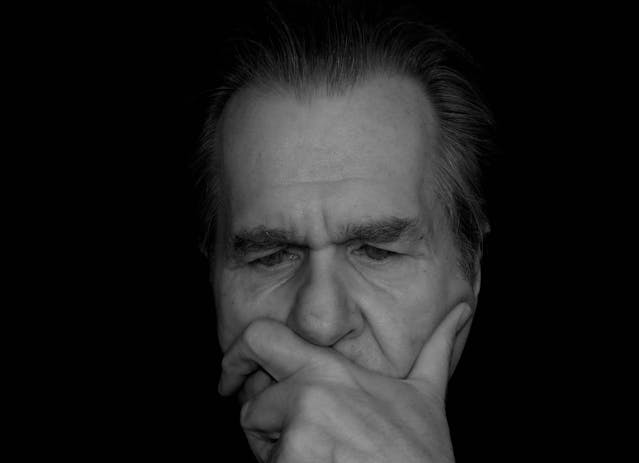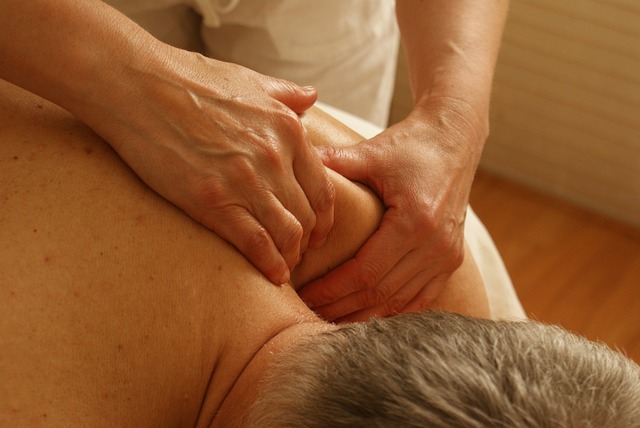Polymyalgia rheumatica is an inflammatory condition characterized by muscle and joint stiffness. Occurring mainly in the hips and shoulders, polymyalgia symptoms either appear suddenly or gradually over several days. This condition rarely impacts individuals younger than 50 and is most common in seniors over the age of 65. The condition is often confused with fibromyalgia, as they both cause muscle pain, yet differ in causes, symptoms, and treatments. Polymyalgia rheumatica is also related to another inflammatory condition called giant cell arteritis. In this article, we will explore a few of the important signs that may suggest you have polymyalgia rheumatica.
Shoulder Pain

Polymyalgia rheumatica typically starts with aching shoulder pain. This makes performing everyday activities, such as dressing or reaching for things, very difficult. The pain is usually experienced on both sides of the body and often worsens at night, making it hard to sleep. The pain sometimes travels into the upper arms, resulting in a deep and persistent ache that won’t go away.
Neck, Buttock, Thigh, Hip, and Upper Arm Pain

While the pain typically starts in the shoulders, many people also experience pain in other major muscle groups, such as those found in the hips, upper arms, buttocks, thighs, and neck. This aching pain can make it difficult to sit, bend, or get up from a seated position. This deep pain often gets worse after performing tasks that require repetitive movement or after not being active for an extended period of time.
Stiffness

One major symptom of polymyalgia rheumatica is feeling very stiff, especially in the mornings or after being inactive for a while. Patients often describe the feeling as their muscles “locking up” after waking up, with the feeling often lasting more than an hour. Even just sitting in the same position for a while can cause parts of the body to stiffen up, which makes moving very uncomfortable. Some people find relief in mild movements, however, left untreated, this condition can progressively worsen and impact one’s mobility.
Limited Range of Motion

If left untreated, the stiffness can lead to a limited range of motion. For example, your shoulders hurt if you try and move them beyond a certain range, making it difficult to raise your arms upwards or extend them outward. It can also lead to reduced hip mobility, making activities such as getting up from a seated position or climbing stairs challenging. Many people end up unconsciously limiting their movements to avoid pain, which can often result in a further decline in flexibility due to muscles growing weaker.
Knee, Elbow, and Wrist Pain

While most people mostly experience pain in their hips and shoulders, some people also experience stiffness in their knees, elbows, and wrists. Although these symptoms can be mistaken for arthritis, individuals with polymyalgia rheumatica don’t typically experience the joint damage and swelling associated with rheumatoid arthritis. Writing or typing becomes very difficult due to the wrist pain, and even walking can become a struggle due to the severity of the knee pain. What makes it worse, is that this joint pain is often accompanied by muscle pain, making any movement a challenge.
Other Symptoms of Polymyalgia Rheumatica

While the main symptoms of polymyalgia rheumatica primarily concern pain and stiffness, there are also several other symptoms to look out for. The inflammation can often lead to a mild fever, and many people also report feeling constantly fatigued. Some individuals also report an overall sense of malaise, where they don’t feel very good without any apparent reason. Certain individuals also lose weight due to a lack of appetite. Depression is another symptom that can occur, often arising from mobility issues.
The Bottom Line

As we grow older, our bodies become more susceptible to various conditions. These conditions often result in limitations to our movement due to the pain they cause. Many polymyalgia rheumatica patients experience stiffness and pain that drastically impacts their mobility, making performing everyday tasks a real challenge. If you notice any of these signs in your or a loved one’s daily life, it’s best to book an appointment with a health practitioner for a more thorough examination. These signs include muscle stiffness in the shoulders and hips and joint pain in the knees and elbows. This stiffness and pain can significantly limit movement, leading to a lower quality of life and, eventually, depression.